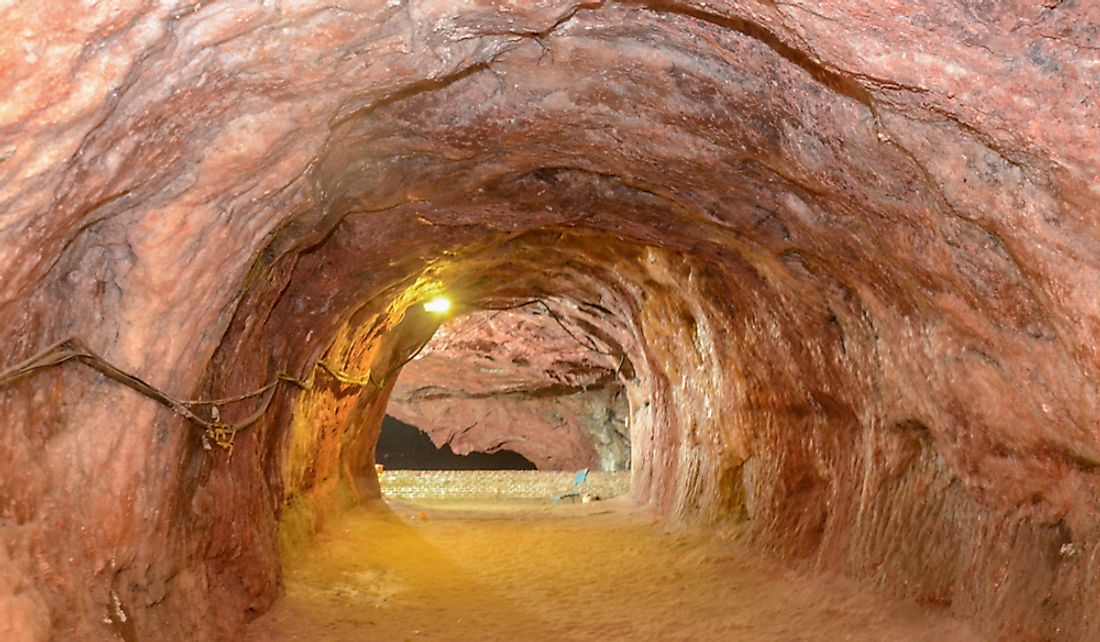What Are The Biggest Industries In Pakistan?

Pakistan is an independent state located in South Asia and ranked as the world’s 55th country with the largest factory output. The country's industrial output is approximately 4% of the country's GDP and has cotton textile production and apparels manufacturing as the largest industry in the country accounting for 66% of all export items and employs approximately 40% labor force in the industry. The use of cotton has increased by about 5.7% in the country over the last five years, and the economic growth has been averaging about 7%. As of 2010, the spinning capacity in Pakistan had 10 million spindles, and textile exports were valued at $15.5 billion, and some of the major industries in the country include fertilizer, cement, edible oil, steel, sugar, chemicals, tobacco, machinery, and food processing among others.
Mining Industry
Pakistan has fast deposits of numerous minerals and other natural resources, and some of the most important minerals in the country include limestone, chromite, gypsum, iron ore, gold, silver, rock salt, copper, precious stones, coal, gemstones, marble, graphite, fireclay, sulfur, and silica among others. The province of Punjab has the world’s largest deposits of salt, while the province of Balochistan is an area with rich deposits of oil and gas, although it has not been fully exploited or explored. The government of Pakistan has recently pursued policies to develop the region so that it can exploit the vast resources found in the region. Other deposits of minerals such as zinc are found particularly in the southern part of the country, while the western part has deposits of gold.
Oil and Gas Industry
Oil was first discovered in Pakistan in 1952 at Suo Sui in the province of Balochistan and in 1960 a the Toot oilfield in Islamabad in Punjab province with production increasing steadily. Similarly, natural gas was also discovered 1952 at the giant gas field Sui in the province of Balochistan. The country also is a major producer of bituminous coal, lignite, and sub-bituminous coal. Pakistan started coal mining way back during the colonial period, and it has been used in the country in different industries since independence in 1947. In 2005, a Canadian based company signed an agreement with the state-owned Oil and Gas Company of Pakistan to explore the Toot field. Natural gas in Pakistan is substantially large and the levels of the remaining reserves are thought to so huge, and they are expected to last for at least 20 years because of heavy use in the country.
Manufacturing Industry
Pakistan is one of the largest manufacturing countries in the world, and it is ranked as the 30th largest. Manufacturing industry accounts for approximately 20% of the total output in the country, and over the last five years, the manufacturing industry has experienced an average growth of 3.4% annually. Manufacturing in the country can be categorized into two; that is large scale manufacturing, which is valued at $28 billion and the small scale manufacturing sector, which is valued at $653 billion. Manufacturing industry in Pakistan has been growing steadily, and in the 2001-2003 financial years the growth in the industry was about 7.7%, and for the twelve months that ended in June 2004, the country’s large-scale manufacturing experienced growth of above 18% in comparison to other years. The garment and textile industry together with its related products is by far the single largest industry in Pakistan, and it is made up of 453 textile mills which are composed of 403 spinning units, 50 integrated units having 9.33 million spindles and 148,000 rotors.
Prospects and Challenges Facing Pakistan
The current economic outlook of Pakistan presents some opportunities however the country is also facing different challenges particularly in the long term where it could severely affect the prospects of growth, and therefore the economy would only experience some sporadic bursts of the growth as opposed to having a sustained upward trajectory. Some of the challenges facing the Pakistanis economy include increasing public debt, reducing exports and increasing imports, lack of political consensus, low taxation and low investment, low savings and high consumption-oriented society, and the shrinking share in world trade among other major challenges.











